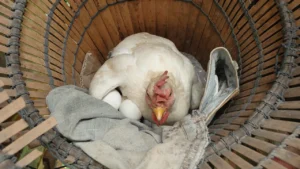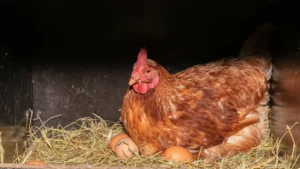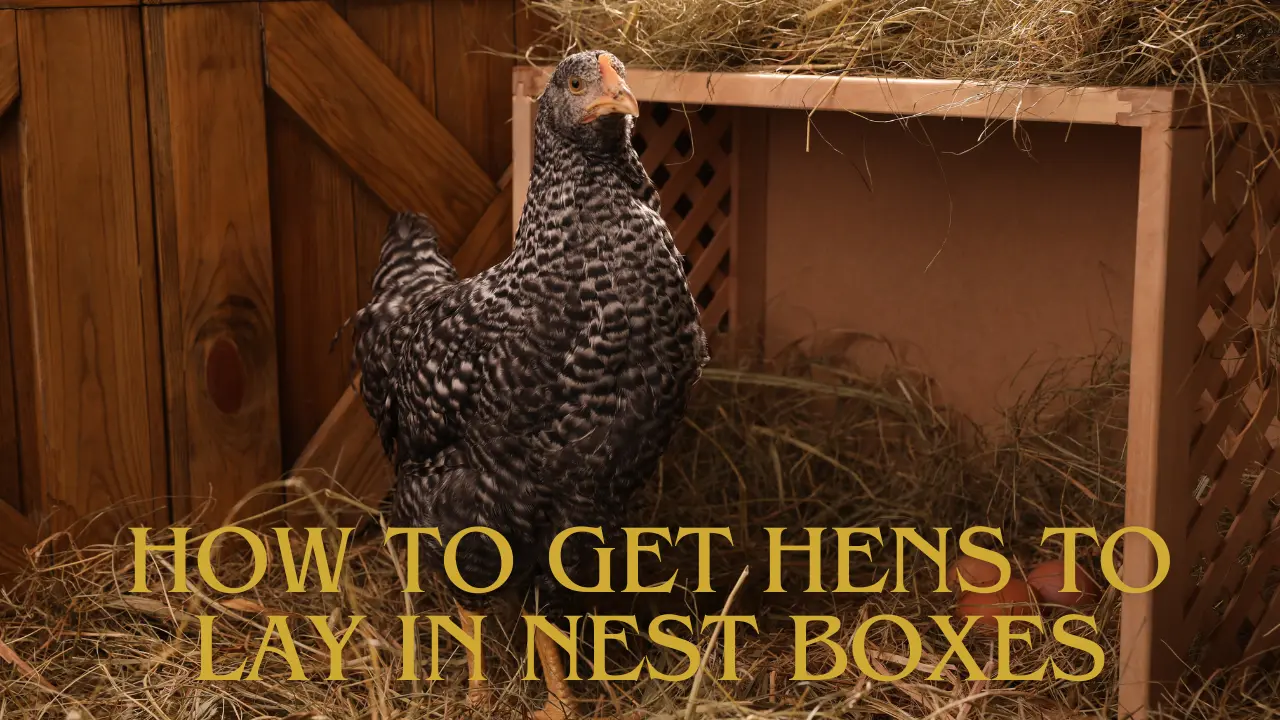When you’re raising chickens getting your hens to lay their eggs in nesting boxes can sometimes be a challenge. It’s especially tricky with free-range chickens or pullets that are new to laying. They might start laying their eggs in random places like the coop floor food tray or even the dog’s house! As a first-time chicken owner, I can tell you it’s an experience that requires a bit of patience and training. Older hens usually know where to lay but it can be a bit confusing for the younger ones especially if they’re just starting to lay after five to six months.
Getting chickens to lay in their designated nesting boxes takes more than just setting them up and hoping for the best. It’s about creating an environment where they feel comfortable and encouraged to lay where they’re supposed to. I’ve had my own time-honored tips for getting girls to use the nest boxes which involve a little bit of coaxing and training. Whether you’re dealing with a batch of 2020 chickens or just trying to figure out what works sometimes helping them understand is all it takes. With the right strategies you’ll be collecting eggs in your nesting boxes instead of the random corners of the coop.
Why Do Chickens Prefer Nesting Boxes for Laying Eggs?
It can be a bit challenging to train chickens to use them but once they get used to it they form a habit of laying there. The value of having a reliable spot for egg collection makes the process much easier and more convenient. After all who wants to go on an egg hunt every day? The price of chicken eggs is high and every valuable egg counts!
Why Are My Chickens Not Using the Nesting Boxes for Eggs?

If your hens are laying eggs outside the nesting boxes, you’re definitely not alone. Many people have faced the same issue. Here are a few reasons why your chickens might be avoiding the nesting boxes:
- Free-Range Chickens Explained: Free-ranging hens often prefer laying eggs outside the coop, which can make it harder to collect eggs. A simple solution is to keep them cooped up until noon giving them enough time to lay eggs inside before they go out to roam.
- Shortage of Nesting Boxes: A general rule is to have 1 nesting box for every 4 hens. If there aren’t enough boxes, your chickens will find their own comfortable spots to lay eggs.
- Unclean Nesting Boxes: Chickens prefer to lay their eggs in clean, dry spaces but they often tend to poop in their nesting boxes. To encourage them to use the boxes it’s important to refresh the bedding regularly. Using products like Coop Recuperate can help keep the bedding clean and dry just sprinkle it directly into the boxes.
Are You Collecting Eggs Every Day?
If you’re raising chickens, it’s important to gather eggs at least twice a day, especially during the laying season. Chickens may not prefer to lay in a nesting box that’s already filled with eggs, so it’s essential to keep it clean. One or two eggs in the nesting box can actually be helpful to encourage young chickens to lay where they need to. This small action can help them form a habit of using the box and make your egg collection easier!
Simple Tips to Train Chickens for Nesting Boxes
If you’ve got enough nesting boxes but your hens aren’t using them try these tips to teach them:
- Use Fake Eggs: Placing a fake egg, golf ball or an already laid egg in the nesting box can encourage younger hens to lay there. They will naturally follow what the other chickens are doing.
- Cover Unwanted Nesting Areas: If hens are laying in undesired spots like the food tray simply cover those areas to break the habit. I’ve used this trick with success to redirect my girls back to their nesting boxes and it worked well.
- Consistency from Mature Hens: Retraining older hens can be challenging because they are set in their ways. However with patience and time you can encourage them to return to the nesting boxes consistently.
Do Nesting Boxes Need to Be Maintained?
Chickens prefer clean nesting boxes so it’s important to tidy up regularly. When gathering eggs if you notice poop or excess feathers, simply cleaning them as you go will help maintain a clean environment for your hens.
Are the Nesting Boxes Suitable for Hens?

Make sure the nesting boxes are cozy and suitable for hens by adding fluffy bedding like shavings, hay or straw. These extra soft materials create comfy places for your hens to nestle. Regularly refreshing the bedding will keep your chickens happy and encourage them to lay in the boxes.
Are You Creating the Ideal Environment?
To encourage your chickens to lay in nesting boxes ensure they have a safe, cozy space. Dark quiet corners provide the ideal atmosphere. It’s important to provide a calm environment where they feel secure to lay their eggs.
Do You Have Enough Nesting Boxes?
Make sure you have enough nesting boxes for your hens. The ideal number is one nesting box for every four to six hens. If the boxes are full when a chicken is ready to lay they may look elsewhere, which can affect their laying habits. It’s important to keep this in mind.
Do You Have Adequate Roosting Spots?
Make sure you have adequate roosting spots for your chickens. If they don’t have a place to sleep they might end up in the nesting boxes which should be discouraged. This is because sleeping in the boxes can make them dirty and unappealing for laying eggs.
Catch Your Hens Laying Outside the Nesting Boxes
If you catch your hens laying in the wrong spot, try to move them to the nesting box immediately. With some time and patience, this can help them realize the nesting box is the ideal spot to lay eggs. It may take a few attempts but it will eventually break the bad habit of laying outside the nest.
Quick Review: Training Hens for Nesting Boxes

To train hens to lay in their nesting boxes it’s important to gather eggs regularly and keep the nesting boxes tidy and cozy. Creating a perfect atmosphere with the right amount of adequate roosting spots helps too. Consider using a nest egg to encourage them and make sure they are confined until mid-morning to ensure they don’t lay in the wrong place.
Pros and Cons of Getting Hens to Lay in Nest Boxes
Here are 5 pros and cons of getting hens to lay in nest boxes:
Pros:
- Easy Collection: Having hens lay in nest boxes makes it easier to collect eggs regularly without having to search in random places like the outdoor run or under water buckets.
- Clean Eggs: Nest boxes provide a cleaner environment for eggs to be laid reducing the risk of poop contamination and making the eggs safer for consumption.
- Increased Productivity: When hens feel safe and comfortable in their nest boxes they are more likely to lay eggs regularly improving productivity.
- Enhanced Hygiene: Keeping the nest boxes clean helps maintain a hygienic environment reducing the chances of infections or pests that could harm your flock.
- Better Health for Hens: A designated cozy nest box gives hens a space to feel secure reducing stress and promoting better overall health.
Cons:
- Initial Training: It may take time and effort to train hens to use the nest boxes especially if they have already developed habits like laying in random spots.
- Space Issues: If you don’t have enough nesting boxes for your flock some hens might not be able to find a spot to lay causing frustration.
- Maintenance: Nest boxes require regular cleaning and keeping them tidy and fresh can be time-consuming especially if your hens are laying a lot of eggs.
- Costs of Setup: Depending on the materials and size of nest boxes the initial setup costs (like buying plastic totes or metal roll-out boxes) can add up.
- Hens May Not Use Boxes: Despite creating the perfect nesting box there’s no guarantee that all your hens will use it, especially if they prefer other areas in the coop or outside.
Commonly Asked Questions About Nesting Boxes
FAQ 1: How many nest boxes do I need for my hens?
It’s recommended to have 1 nest box for every 5-6 hens. However, my girls tend to take turns in the same box, so make sure to have enough boxes available to prevent crowding.
FAQ 2: What is the best material for nesting boxes?
You can use fancy metal roll-out boxes, plastic buckets or small totes for nesting boxes. Choose a material that is easy to clean and comfortable for your hens to lay in.
FAQ 3: How can I encourage my hens to lay in the nest boxes?
Place fake eggs or golf balls in the nest boxes to show your hens where they should lay. I found these at the farm supply store and it worked well for me.
FAQ 4: How often should I clean the nesting boxes?
It’s important to clean your nest boxes weekly. Hens poop a lot, so keeping the boxes clean will prevent unpleasant odors and ensure a good laying environment.
FAQ 5: Where should I place the nesting boxes?
Nesting boxes should be placed a few inches off the ground in a private area that is dark and inviting. Hens prefer privacy when laying eggs.
Conclusion
Getting your hens to lay in nest boxes is a process that requires patience the right setup and a bit of trial and error. By ensuring you have enough nesting boxes for your flock creating a comfortable and private environment and maintaining cleanliness your girls will feel encouraged to lay their eggs in the designated spots. You can further enhance the process by adding fake eggs or golf balls to guide the hens as well as using materials like plastic totes or small buckets that are easy to clean and make the boxes more appealing.
Remember each flock is unique and it may take some time to adjust their habits. By paying attention to your hens’ needs and offering them a safe, cozy space to lay their eggs you’ll be able to break bad habits and encourage better egg-laying behavior. Keep your nest boxes tidy and regularly check for cleanliness to maintain an inviting atmosphere that your hens will love. With the right environment and consistency your chickens will soon be happily laying in their nesting boxes.












